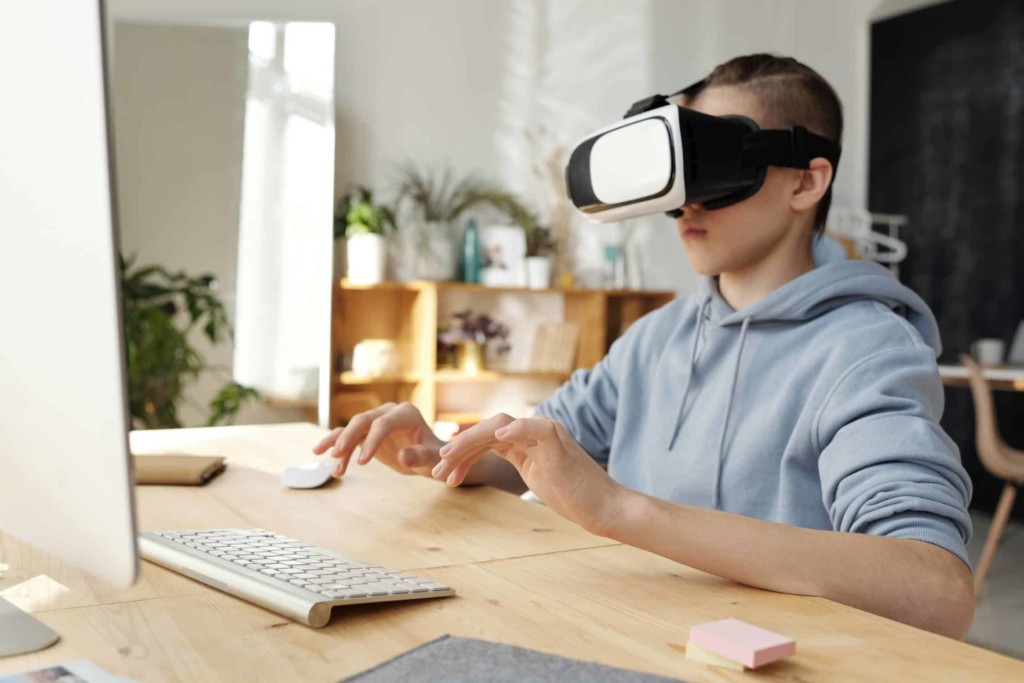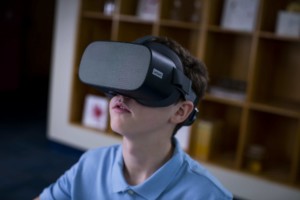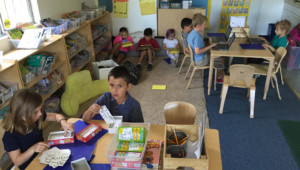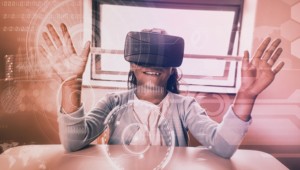8 Ways to Bring Augmented and Virtual Reality into the Classroom

For many educators, it has been a challenging start to the new school year. As we try to navigate the different learning spaces and requirements for in-person, hybrid or fully online during the year and seek to find the right balance for our lessons and leverage the right tools and strategies to best meet our students’ needs. Another challenge is with student engagement, especially in the virtual environment. Engagement is an area that I have been working on over the past few years and even more so, since the start of this new school year.
We have thousands of resources to choose from, ideas we can gather from the different learning communities that we belong to, however it can be overwhelming and time consuming to sort through all of our options. It is always important when we consider our options to think about the purpose for using them. I try to find tools that have benefits beyond their educational use and that are applicable to the real world and will help students to prepare for the future.
As we look for activities and new ideas to keep students engaged, I think it is the perfect opportunity to explore some of the emerging technologies like augmented and virtual reality. While traveling around the world or exploring objects up close is limited during this time, we can use some of the AR and VR tools available to explore and also to have students create their own. Giving students the chance to engage in a more meaningful way with the content they are studying and move from consumers to creators using these tools helps to increase student engagement and leads to higher student achievement.
Using tools for exploring and immersing more in learning through AR and VR enables students to connect more closely with what they are studying. By having choices for creating with these tools, it also enables us to meet specific student needs and interests. As a bonus, these tools are also fantastic options for anyone interested in learning about these emerging technologies.
Here are eight options to get started with:
- Big Bang AR. Download the Big Bang AR app to learn about the big bang theory and engage in an interactive journey in mixed reality. Travel back 13.8 billion years and see the formation of the universe happen right in your real-world space. Imagine seeing the stars as they form right in front of your eyes.
- Blocks. Create 3D models to explore in virtual reality. Choose from six different tools that enable you to create simple to more complex models. Check out the examples available in the Blocks gallery or create your own and then walk around in VR. Blocks is available for the HTC Vive or Oculus Rift.
- Devar: Choose from one of the lively characters to bring into your classroom or home. Devar is easy to get started with and is a fun way for students or anyone to learn more about what augmented reality is and how it can be used for storytelling. Start by selecting a character and add music or your own narration to it and record. Share the video with students or have students create their own to tell a story. Check out the other resources available from Devar such as games and books related to different content areas and grade levels.
- DisruptED. Provides augmented and virtual reality tools for students in pre-K through third grade. I recently learned about this one from Jaime Donally and had a chance to see the possibilities for engaging students through AR books. The new starter kit includes activity books, gamified activities, a headset and more. The newest AR book “Bee Safe” is available for a free download.
- Google AR/VR. A website full of resources for learning about augmented and virtual reality through Google. Check out the experiences which include opportunities to learn about math, science, the human body and more in AR. Bring prehistoric creatures or other animals into your environment. You can even create your own AR experience by downloading the software development kit (SDK) to create with Google ARCore. With the SDK, you can create new AR experiences or enhance existing apps with AR features.
- Figment AR: For anyone looking to try something fun and get started quick with AR, Figment AR has been one of my favorite apps. Not only is it for AR, but it is also for VR because of the portals that can be added into your experience. My students have used it to create short stories with animated characters and special effects or just to have fun going from AR to VR and getting trapped inside of the portals that they create!
- Nearpod: Offers many options for promoting student engagement through its interactive multimedia platform. My first VR experiences were with Nearpod and there are thousands of lessons to choose from which include 3D objects and VR field trips. Especially in hybrid or distance learning, lessons through Nearpod are great options for immersing students in different learning experiences and traveling around the world or exploring places and objects more closely.
- Scavengar AR. Use Scavengar AR to create fun games or scavenger hunts for students to explore in augmented reality. Educators can create their own game and include multiple choice questions. Students can be tasked with locating specific objects or colors. An app like Scavengar is a good option for using when traveling to specific locations is not possible.
It is important to offer multiple options to students that lead to more meaningful experiences that promote the development of essential skills for the future and empower them through self-driven learning. We have an opportunity to innovate and reimagine learning as we embrace the new school year. We can use these immersive tools to create new learning experiences for our students and empower them to create their own!
For more, see:
- Virtual Reality in the Classroom is Becoming the New Norm
- 15 AR and VR Immersive Learning Tools
- Students Use Virtual Reality to Contribute to Their Communities
Stay in-the-know with innovations in learning by signing up for the weekly Smart Update.





0 Comments
Leave a Comment
Your email address will not be published. All fields are required.